Adaesi Ukairo interprets familial influences through expressive metal sculptures
Adaesi Ukairo’s metal sculptures are inspired by her time making things with her family in Nigeria, and the expressive possibilities of brass and copper
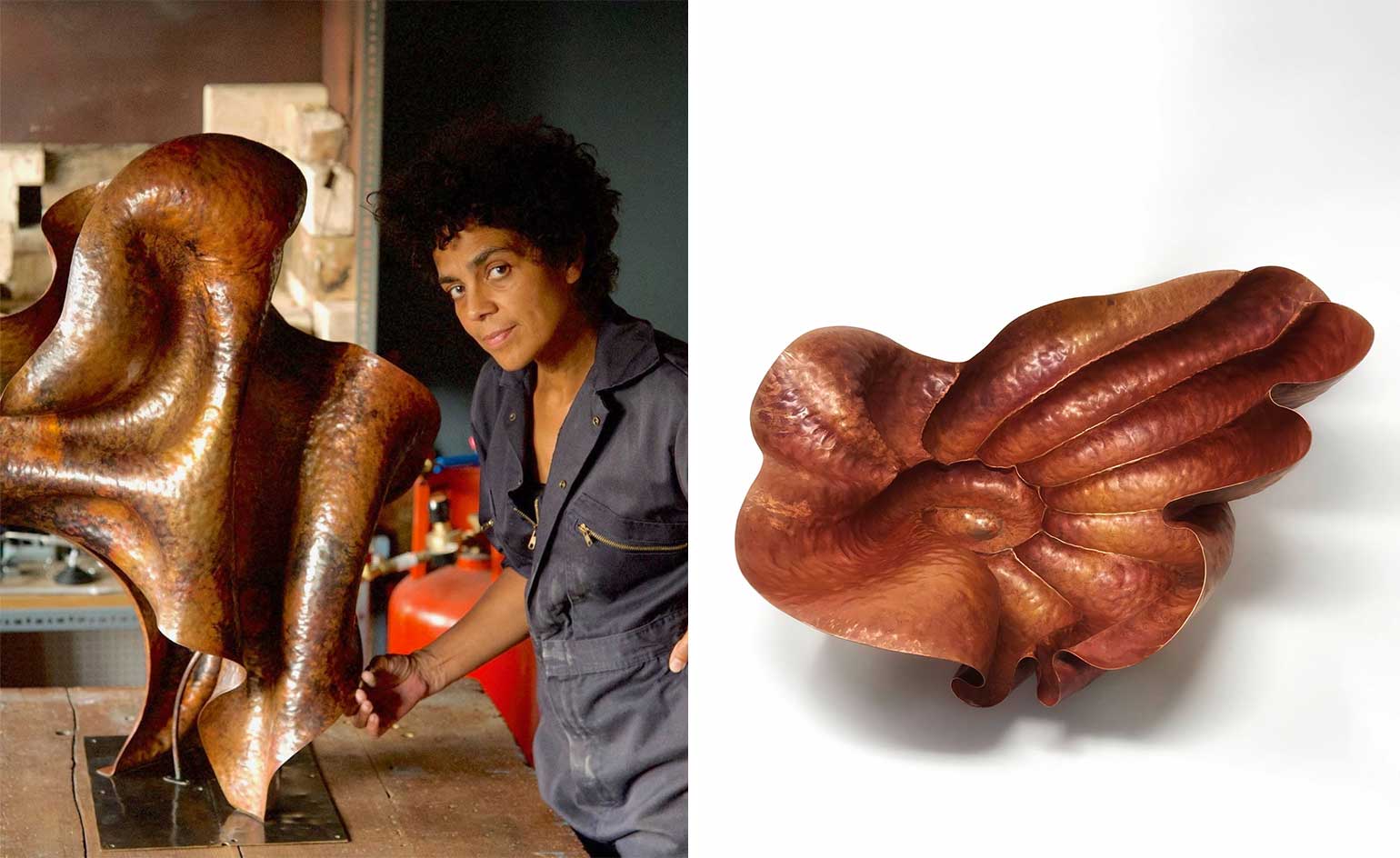
'I have always had this feeling and need to express [myself] and use my hands,' reflects Adaesi Ukairo, an artist whose sculptural works sit at the nexus of art, craft and design. London-born and now based in Hastings, Ukairo works principally in copper and brass, creating pieces that are an elemental portal to migration, return and cross-cultural norms, and showcase the endless possibilities that metal provides to those who master it.
Adaesi Ukairo’s works in metal
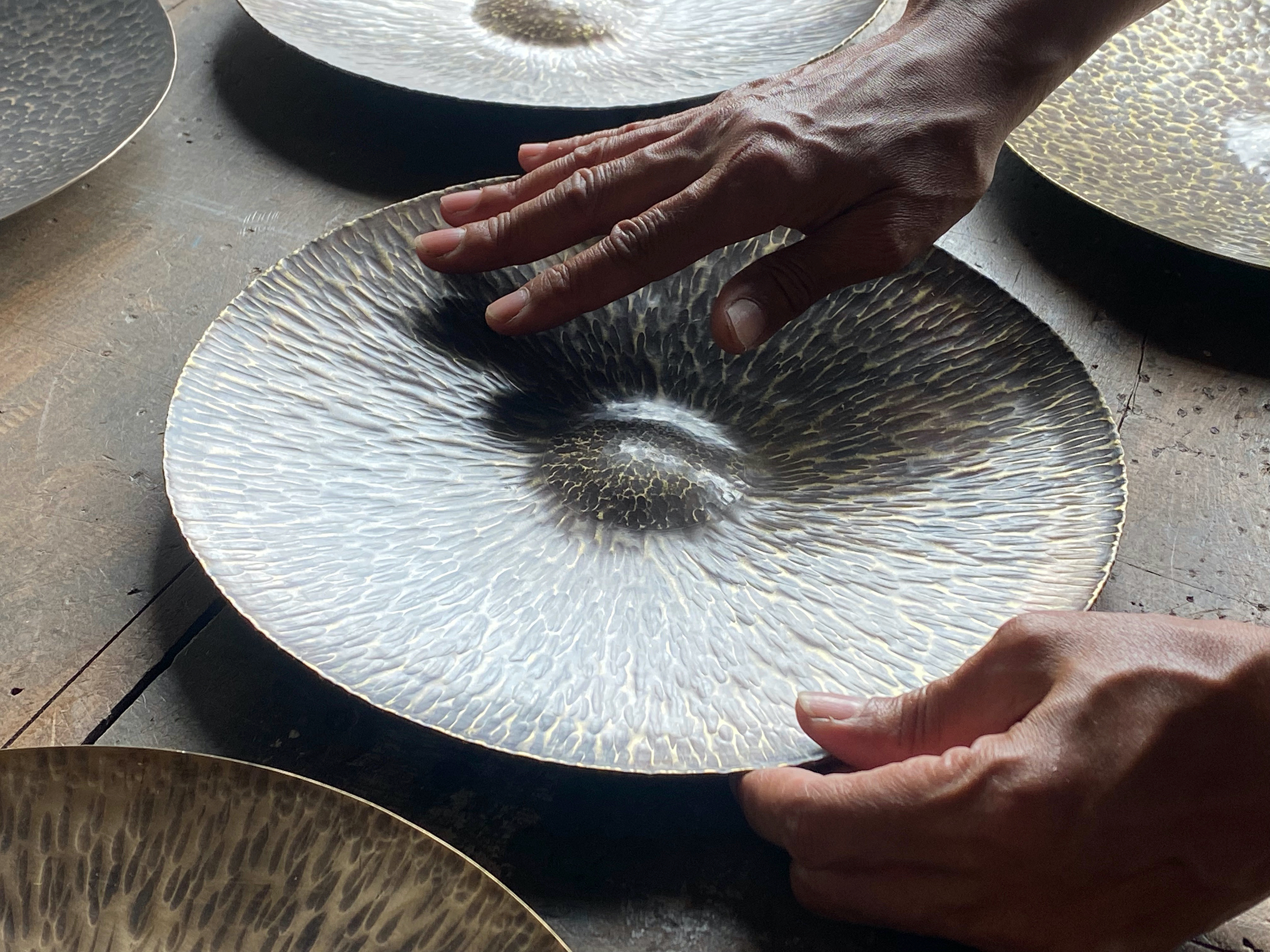
‘Phlat’
Ukairo is of dual British and Nigerian heritage and her family moved to Mbaise, in rural Nigeria, when she was aged seven. It’s a place that, she notes, 'had a real communal way of living. I made pieces with women, my aunties and friends. We would all sit around making, from palm fronds rope and all sorts of useful stuff. I don’t think that world is there anymore, it’s all concrete houses now. But those creative influences I have held within my body and now express through my work.'
After she studied jewellery, silversmithing and applied arts at London Metropolitan University, Ukairo’s gradual move to creating larger-scale pieces was in many ways a response to wanting to articulate broader themes in her body of work. The names of her four collections not only offer clues to her intent, but also the method of hand-hammering required to achieve different effects and the cultural references that may lie within.

‘Crush’
'They are all different ways of expressing this feeling of movement and of movement within energy,' explains Ukairo. '“Phlat” are plate-like pieces, so the movement within is quite structured, the hammering quite rhythmic and calm. With “Crush”, I wanted to create structures people recognised as bowls and thus used synclastic raising on sheet metal. I hammer quite energetically, so “Crush” expresses something that is more forceful. “Miri” means “water” in Igbo, and references memories of walking with my friends and cousins down to the stream to collect water, and the stories of Mami Wata, the water spirit that traditionally lives in bodies of water. All these things are in my head; and it’s just flowing.'
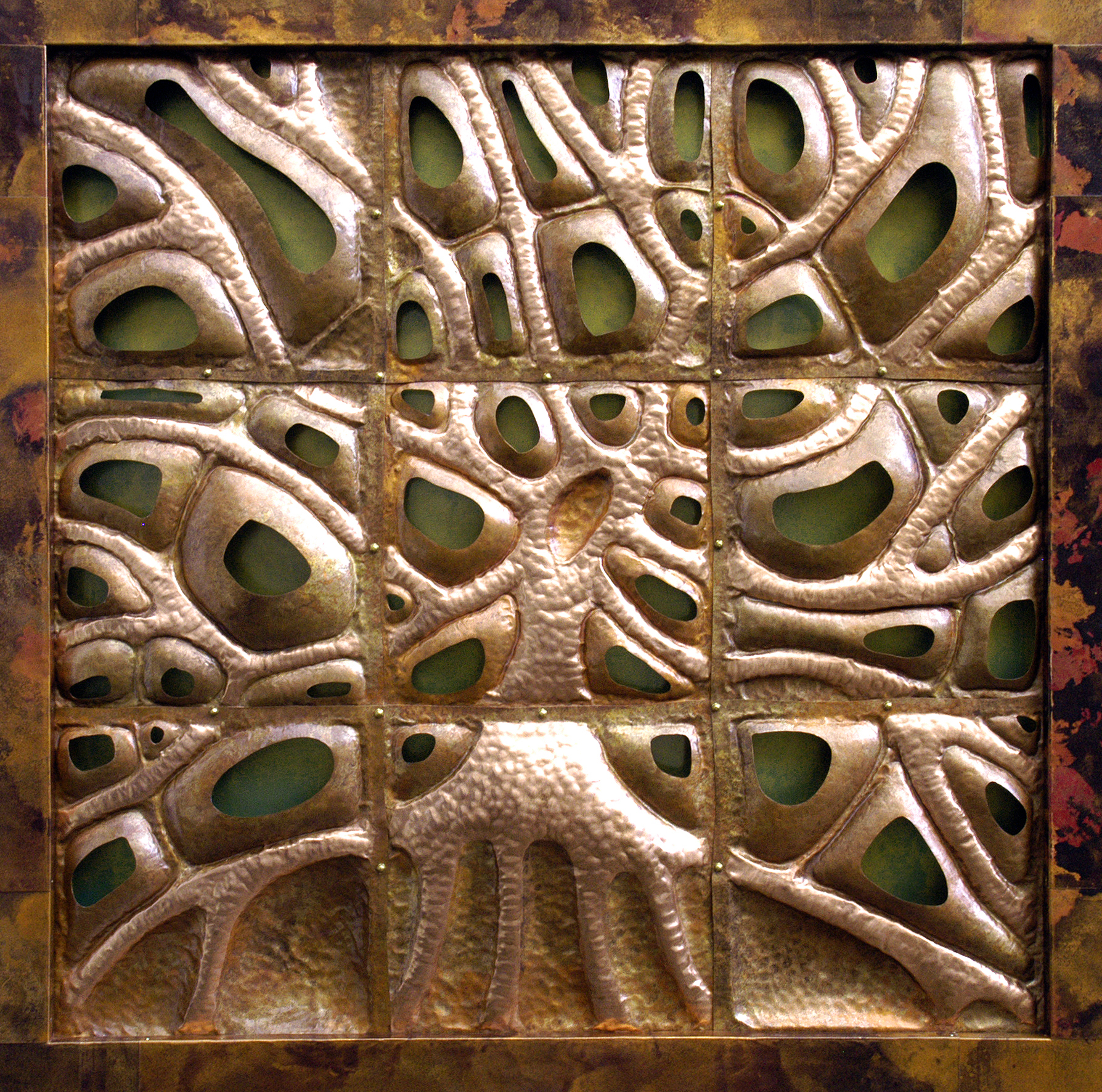
‘Peacock Tree’ wall piece in copper for a private commission
The pieces created in copper and brass see the materials echoing a bucolic palette of red earth punctuated by vegetation and bright sunlight that leaves a hazy shimmer in its wake. Ukairo’s choice of materials is also a comment on intrinsic value, with the designer challenging what she sees as the potentially limiting primacy of gold and silver. 'Copper is a beautiful material within itself, and I wanted to express that. And I also felt the same way about brass.'

‘Undule’
For ‘Undule’, the most recent of her collections and the most celebrated, Ukairo sought a different means of making. Inspired by master metalsmith Heikki Seppä’s seminal work Form Emphasis for Metalsmiths, she explored anticlastic forming, which she took up as a result of creating experimental pieces in clay.
'Metal is amazingly malleable, but coming to clay having worked with metal for so many years, I made these forms that were very undulating, and I wanted to get these shapes in metal. So, I researched and there is a whole world out there. I got these stakes made for me by a blacksmith and that is how I have been making “Undule”.'
Wallpaper* Newsletter
Receive our daily digest of inspiration, escapism and design stories from around the world direct to your inbox.
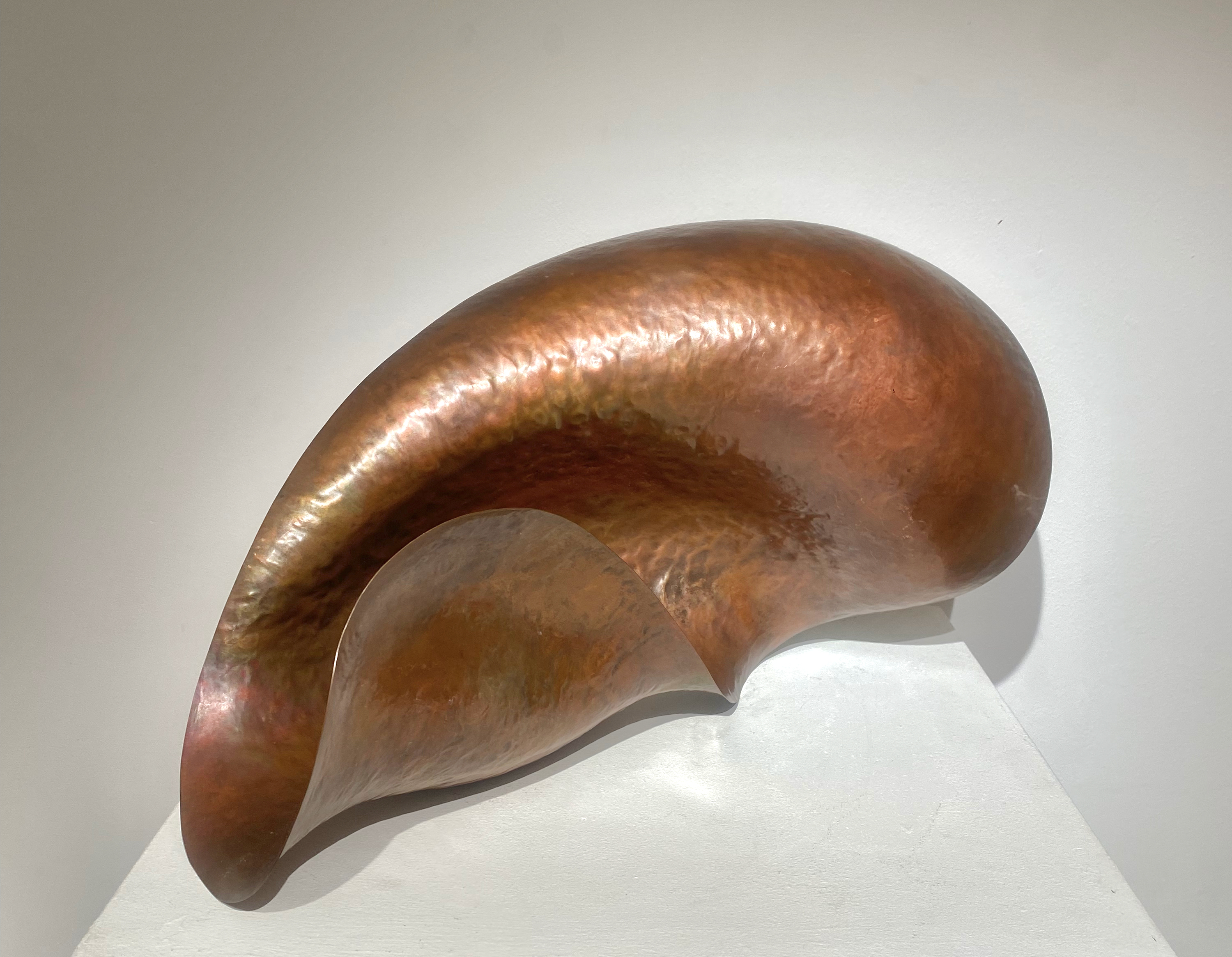
‘Undule’
Ukairo’s process is intuitive. She likens it to being in a mesmeric state, and one where she allows the metal to be animated by her hammering tools, emotion and mood 'until I am satisfied with the balance of it and what it expresses', she says. She is keen to allow her collectors to interpret the pieces in their own way: 'Once I finish, it is for others to decide what they want to think,' she says with a wry chuckle.
However, a positive response at recent exhibitions is reflective of a series that acts as a conduit to the metaphysical and where notions of embodied energy segue with the artist’s personal narrative. Defining space, time and moments is what many abstract objects aim to do; in Ukairo’s case, they explore myriad truths and invite us to do the same too.
Mazzi Odu is a Ugandan-British writer, editor and cultural consultant based in Lagos, Nigeria. Her work focuses on jewellery, design, fashion and art. An alumna of the London School of Economics and Political Science, she has profiled a cross section of leading design talents and creative voices, with a special emphasis on those from the Global South and its Diaspora communities.
-
 Put these emerging artists on your radar
Put these emerging artists on your radarThis crop of six new talents is poised to shake up the art world. Get to know them now
By Tianna Williams
-
 Dining at Pyrá feels like a Mediterranean kiss on both cheeks
Dining at Pyrá feels like a Mediterranean kiss on both cheeksDesigned by House of Dré, this Lonsdale Road addition dishes up an enticing fusion of Greek and Spanish cooking
By Sofia de la Cruz
-
 Creased, crumpled: S/S 2025 menswear is about clothes that have ‘lived a life’
Creased, crumpled: S/S 2025 menswear is about clothes that have ‘lived a life’The S/S 2025 menswear collections see designers embrace the creased and the crumpled, conjuring a mood of laidback languor that ran through the season – captured here by photographer Steve Harnacke and stylist Nicola Neri for Wallpaper*
By Jack Moss
-
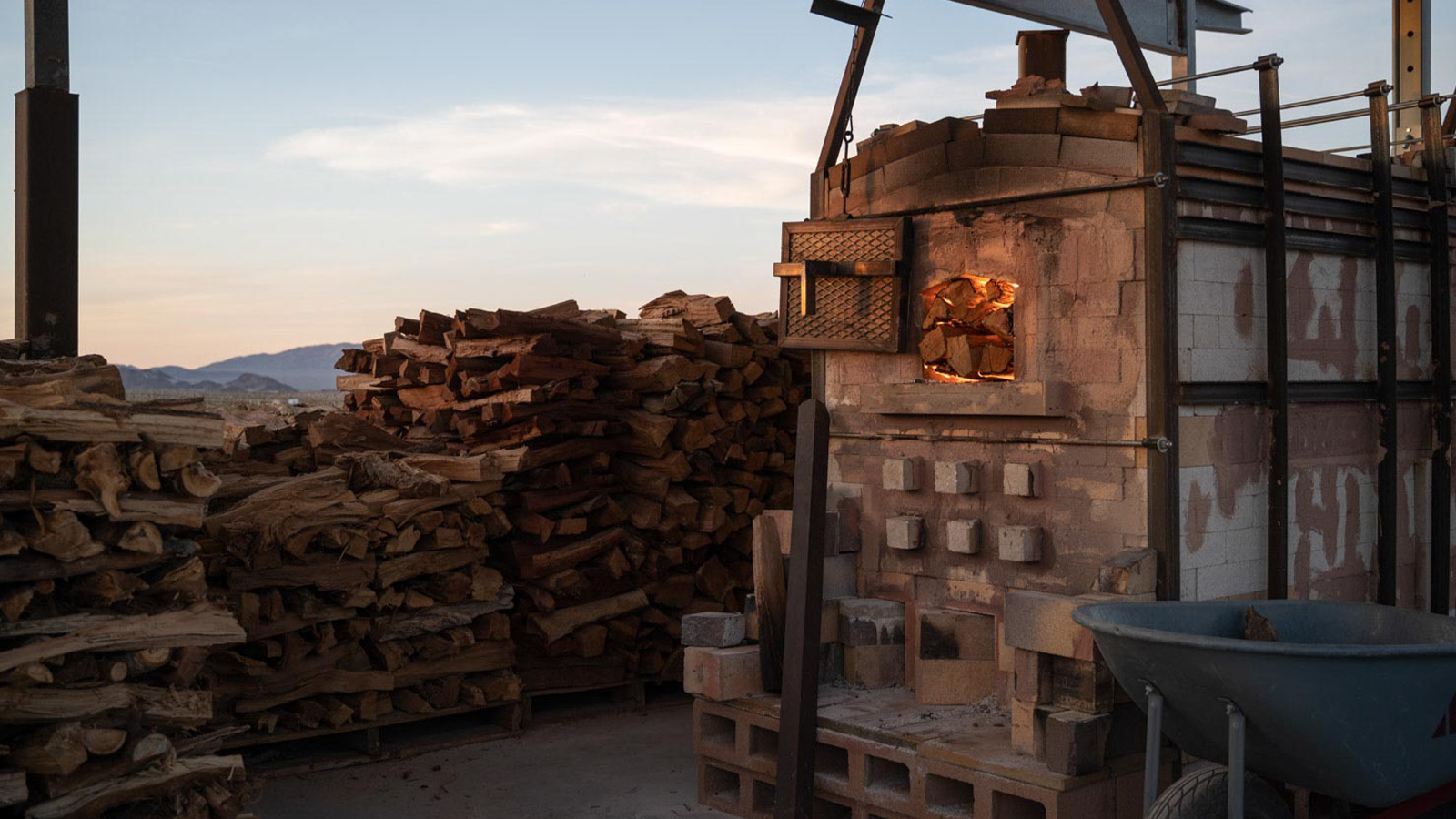 Forged in the California desert, Jonathan Cross’ brutalist ceramic sculptures go on show in NYC
Forged in the California desert, Jonathan Cross’ brutalist ceramic sculptures go on show in NYCJoshua Tree-based artist Jonathan Cross’ sci-fi-influenced works are on view at Elliott Templeton Fine Arts in New York's Chinatown
By Dan Howarth
-
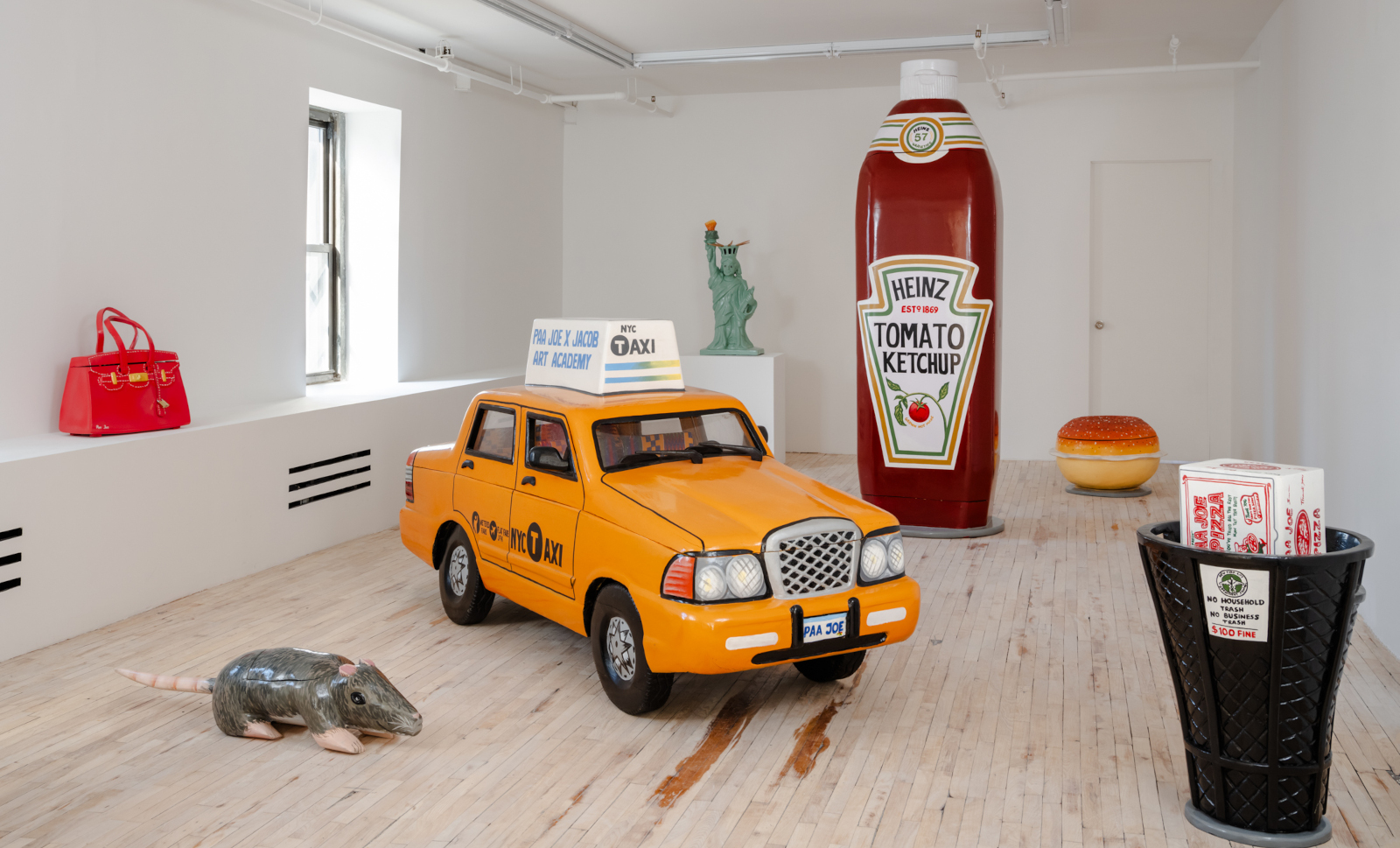 Taxi cabs and pizza boxes: New York icons are reimagined by Paa Joe at Superhouse Gallery
Taxi cabs and pizza boxes: New York icons are reimagined by Paa Joe at Superhouse GalleryNew York’s beloved tokens, from the Statue of Liberty to the classic yellow taxi cab, are reimagined by Paa Joe for Superhouse's inaugural show in New York, ‘Celestial City’
By Julie Baumgardner
-
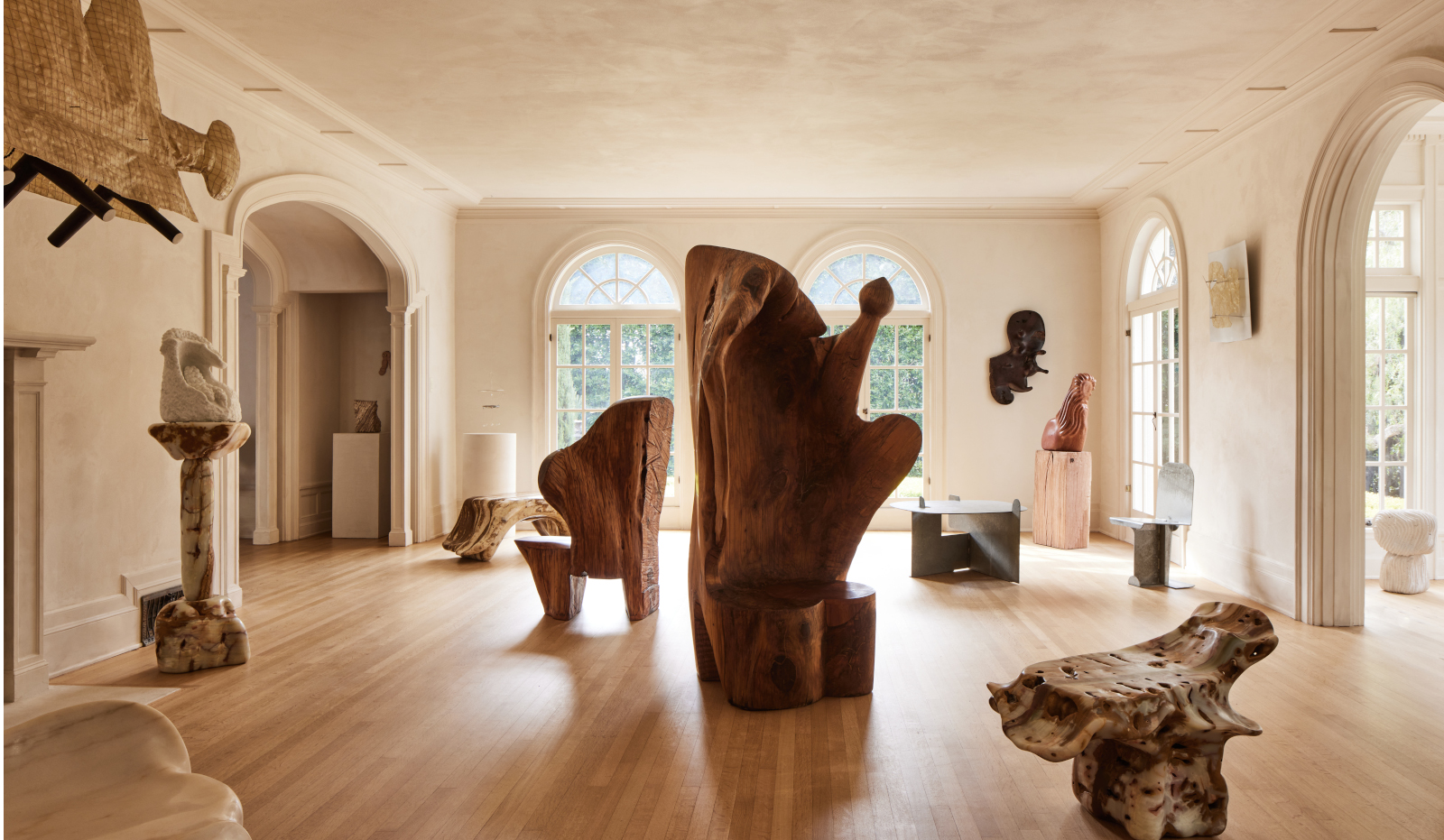 The Future Perfect group show in LA pays homage to JB Blunk’s sculptures
The Future Perfect group show in LA pays homage to JB Blunk’s sculpturesThe Future Perfect celebrates late sculptor JB Blunk’s process and aesthetic with the group exhibition ‘Inner Space’ (until 1 May 2024)
By Julie Baumgardner
-
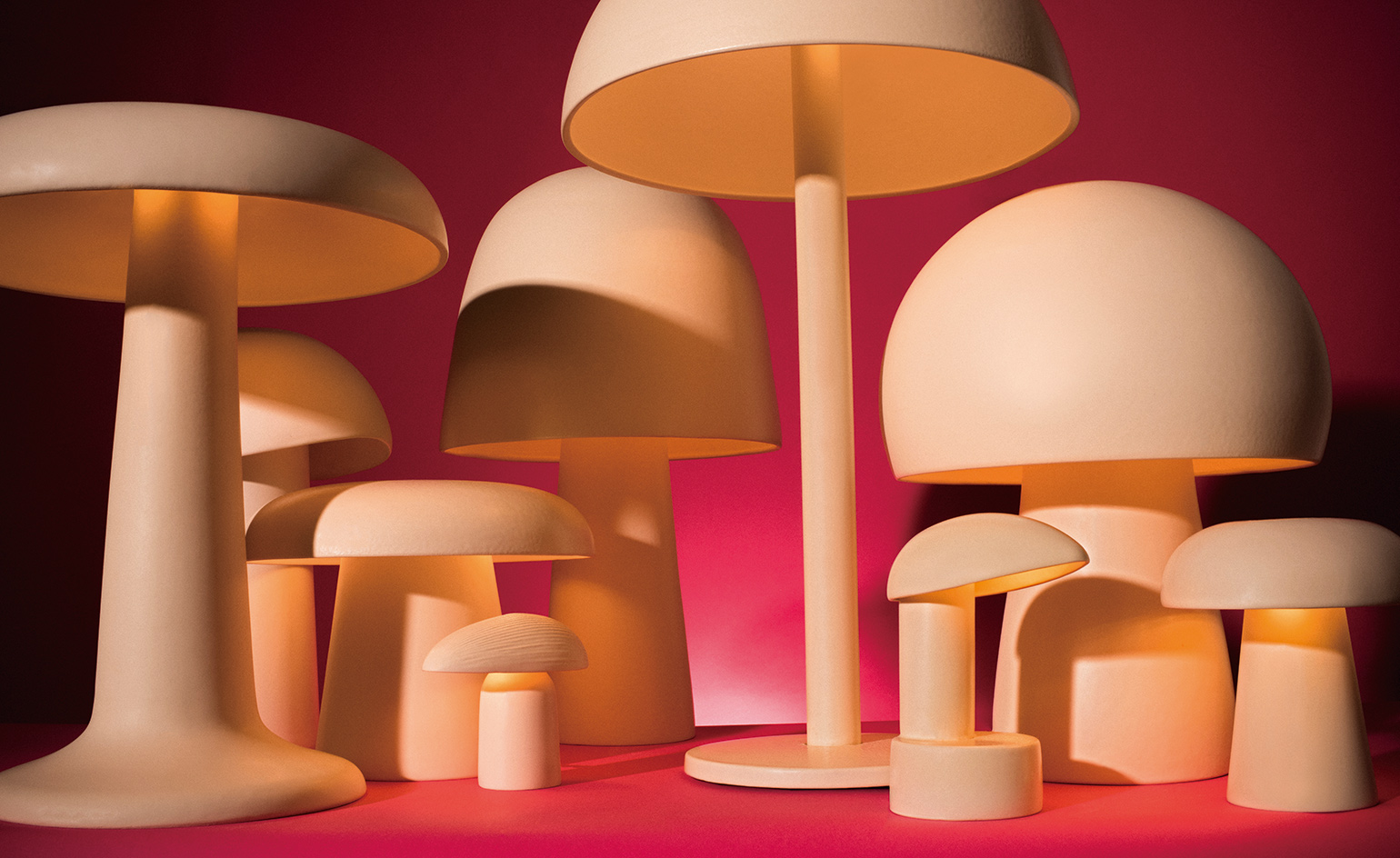 The magic mushrooms of ceramic artist Jos Devriendt offer a sculptural trip
The magic mushrooms of ceramic artist Jos Devriendt offer a sculptural tripBy Yoko Choy
-
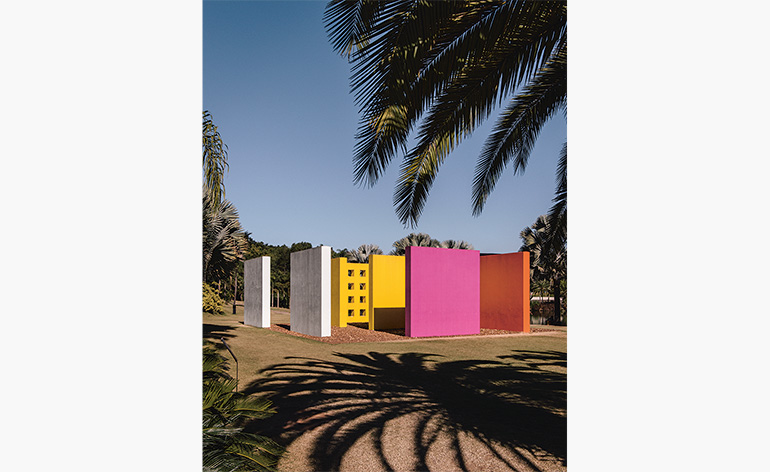 Bernardo Paz: from mining magnate to gardener of earthly delights
Bernardo Paz: from mining magnate to gardener of earthly delightsBy Rainbow Nelson
-
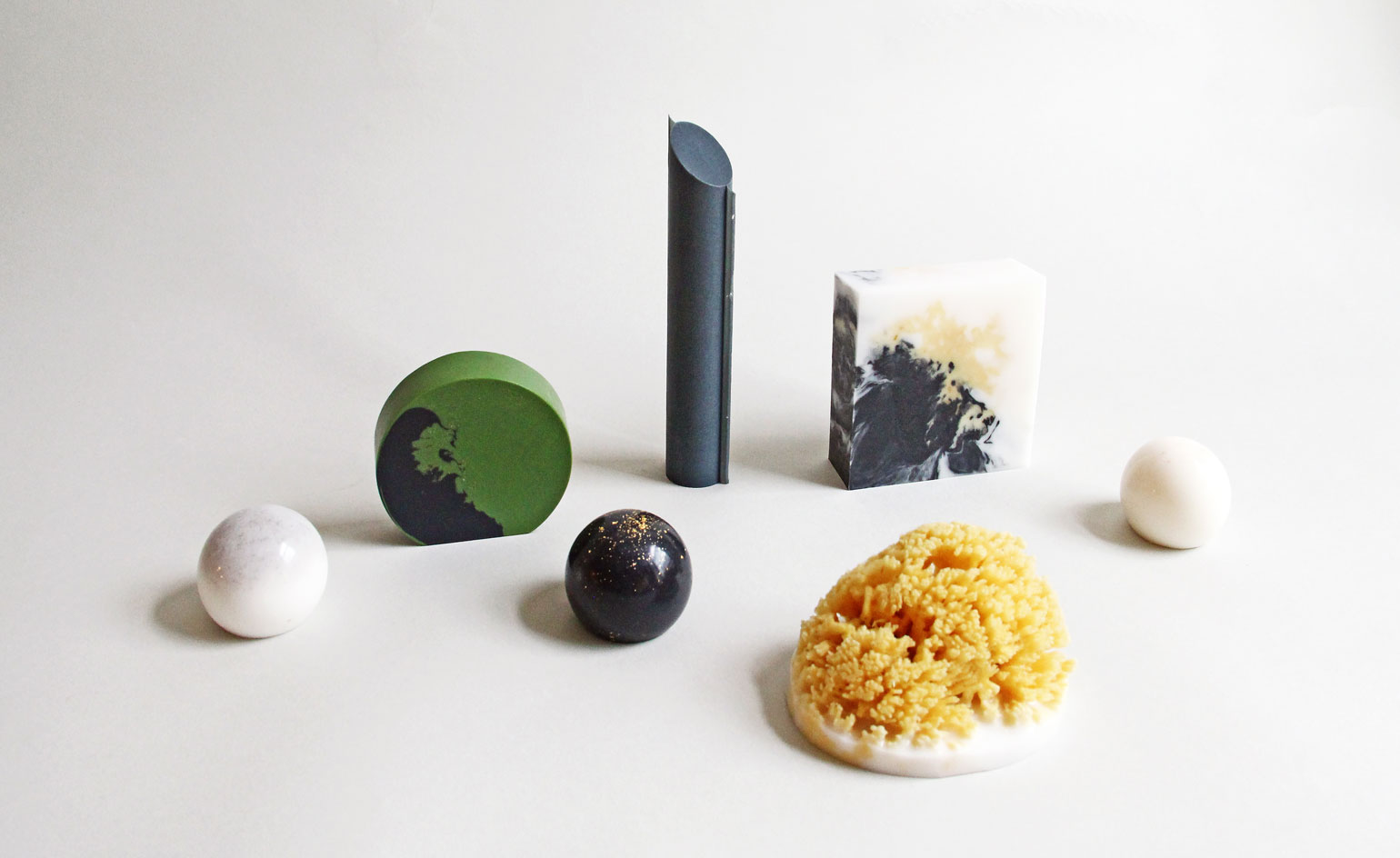 Soap story: Brooklyn design firm Pelle creates the ultimate collection
Soap story: Brooklyn design firm Pelle creates the ultimate collectionBy Pei-Ru Keh